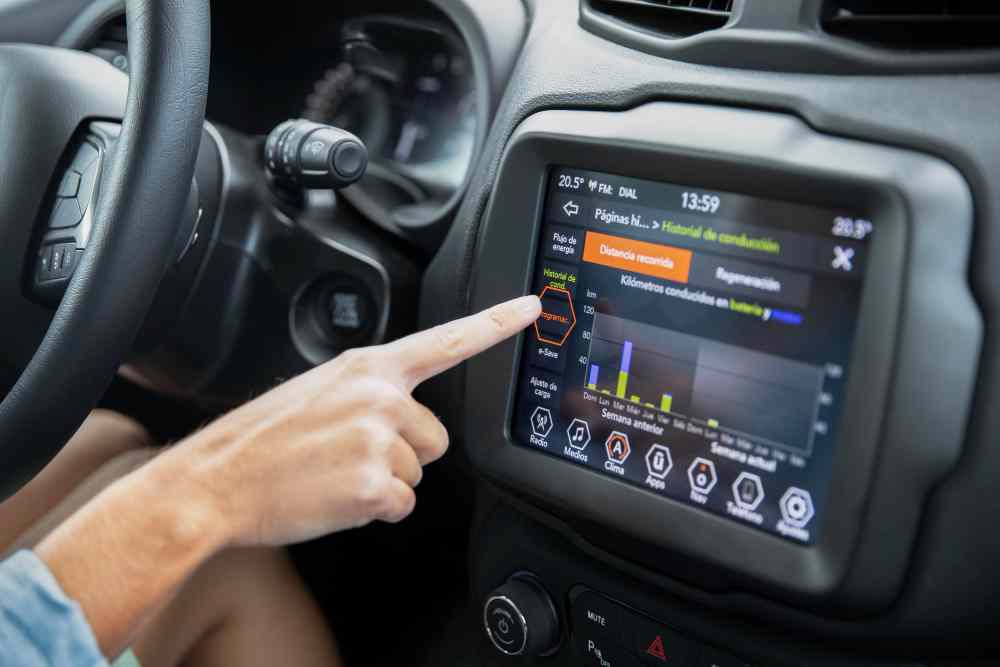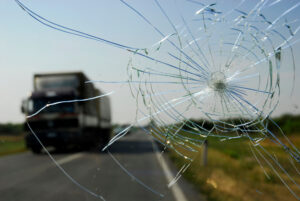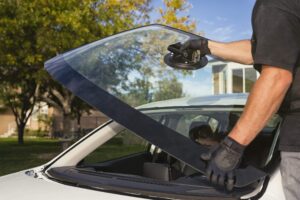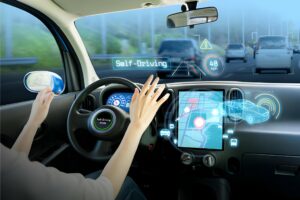Taking care of your car isn’t restricted to just filling up the gas tank and getting an oil change every few months. There are numerous mechanical processes that keep your car running and your drives smooth. In recent years, the automotive industry has witnessed a technological revolution with the introduction of Advanced Driver Assistance Systems (ADAS). These systems are designed to enhance vehicle safety, assist drivers in various ways, and make the road a safer place for everyone. ADAS features include lane-keeping assist, adaptive cruise control, automatic emergency braking, blind-spot monitoring, and more. However, for these systems to function properly, they require precise calibration.
ADAS calibration is a crucial but often overlooked aspect of vehicle maintenance. It is essential to ensure that the advanced safety and driver assistance features in your car operate at their optimal level. Come along on this informative adventure as we unravel the most important aspects that trigger the requirement for ADAS calibration, guaranteeing that your car’s safety systems are always calibrated for maximum road performance.
15 Signs to Know When Your Vehicle Needs ADAS Calibration
Now that we understand the importance of ADAS calibration, let’s explore some signs that indicate your car may need this service:
1.Steering System Repairs:
Steering system repairs or replacements may require ADAS calibration for sensor alignment. The steering system is closely linked to ADAS, with sensors interpreting driver input for lane departure warning and collision avoidance. Sensor alignment may change during repairs or replacements. To ensure safety features respond appropriately to steering input, ADAS calibration is needed to align sensors. This precision improves vehicle stability, safety, and performance.
2.Battery Replacement:
ADAS calibration may be needed after a normal battery replacement to preserve sensor accuracy. The vehicle’s battery powers ADAS’s complex sensor network. Replacing the battery may disturb these sensors’ power supply, compromising their accuracy. After battery replacement, ADAS recalibration is needed to synchronize sensors with altered power dynamics for accurate data transfer. This thorough process prevents discrepancies, ensuring safety system reliability and vehicle safety.
3.Suspension Repairs:
Significant suspension adjustments or repairs may affect sensor alignment and necessitate ADAS recalibration. The precision of sensor alignment is crucial for the smooth operation of safety systems. After suspension adjustments, correcting any potential misalignments protects the integrity and performance of the ADAS systems, making sure they work as best they can to improve on-road safety.
4.Collision Repairs:
After accident repairs, ADAS calibration is required to restore the correct operation of safety systems that were affected during the actual incident. In order to fully restore the vehicle’s safety integrity and maximize the benefits of advanced driver assistance systems (ADAS) after an accident, a thorough calibration procedure is essential.
5.Sensor Replacement:
Calibration is essential to synchronizing the new ADAS sensors with the vehicle’s system while replacing the old ones. This careful process makes sure that adding new parts doesn’t affect the transfer of data, which is very important for safety systems to work well. Maintaining the vehicle’s safety standards and guaranteeing the continuous dependability of ADAS systems require precise sensor synchronization after replacement.

6.Changes in Tire Size:
Tire size and type can affect sensor readings, requiring ADAS recalibration. Changes in tire size affect sensor data accuracy because tires affect vehicle dynamics. ADAS requires exact readings, so recalibration is needed to make safety features like adaptive cruise control and lane-keeping assistance work with changing tires. This recalibration aligns the ADAS systems with the new tire settings for a responsive and safe driving experience, ensuring optimal functionality and safety.
7.Sensor Interference or Blockage:
When dirt, snow, or other debris blocks, covers, or interferes with ADAS sensors, they may need to be re-calibrated. For safety systems to perform as best they can, sensor accuracy is critical, and recalibration guarantees smooth functioning after whatever obstacle has been removed.
8.Wheel Alignment:
When wheel alignment changes a lot, ADAS needs to be re-calibrated to make sure the sensors are correctly aligned. Safety systems that depend on the data from these sensors must be properly aligned in order to maintain their accuracy. Wheel alignment and ADAS functionality must work seamlessly together; otherwise, the efficacy of sophisticated safety measures may be compromised. This recalibration should not be overlooked.
9.Software Updates:
Vehicle software changes, especially ADAS updates, may need recalibration for compatibility and best performance. Software updates increase safety and vehicle performance as technology advances. These changes can change how the software interacts with the complex sensor network. Recalibration is needed to integrate the revised software with the vehicle’s sensor systems. This careful approach ensures that the upgraded features function harmoniously and seamlessly, ensuring the highest levels of safety and responsiveness on the road.
10.After Windshield Replacement:
Following windshield repair and replacement, proper ADAS calibration is required. This procedure guarantees precise sensor alignment, which is essential to maintaining integrated safety systems’ peak performance. The windshield’s function as a support structure for sensors emphasizes how crucial calibration is to ensure the dependability of these systems and their contribution to overall road safety.
11.Routine Maintenance:
To prevent drift and incorrect alignment, routine maintenance should include ADAS calibration. The risk of sensor misalignment grows over time as a vehicle is used, there are changes in its surroundings, and small adjustments are made. Periodic ADAS calibration corrects these minor variations, keeping sensors accurate and responsive. A proactive strategy improves vehicle safety and performance by extending safety system efficacy. A strategic investment in routine calibration as part of routine maintenance keeps the vehicle safe and responsive throughout its lifespan.
12.Suspension Height Adjustment:
Modifications or repairs that change the suspension height may affect the alignment of the ADAS sensors and require recalibration. Sustaining the efficacy of safety systems requires maintaining the accuracy of sensor alignment, especially in the event that suspension dynamics are changed.
13.Dynamic System Changes:
Changes in dynamic systems, such as alterations to electronic stability control or adaptive cruise control settings, may induce ADAS recalibration. Maintaining cohesive sensor performance after dynamic alterations is crucial to the safety features’ continuous dependability.
14.Camera or Radar Module Replacement:
When replacing components like cameras or radar modules, ADAS calibration is critical. Synchronizing new modules with the existing system allows seamless integration and precise data transfer, ensuring that safety systems continue to work optimally.
15.Manufacturer Recommendations:
Following manufacturer instructions is critical for preserving the functioning of ADAS systems. Some manufacturers recommend periodic ADAS calibration checks or specify conditions that necessitate recalibration. Following these rules is critical for retaining the effectiveness of safety features as well as assuring compliance with the manufacturer’s standards
Conclusion
By adhering to these 15 key factors outlined, such as sensor recalibration after windshield replacement, regular maintenance checks, and following manufacturer guidelines, you not only improve your vehicle’s overall safety but also contribute to the longevity of its advanced technologies.
At Speedy Windshield Repair, we take pride in offering top-notch ADAS calibration services, ensuring that your vehicle’s safety features operate at their best. Trust us to provide the precision and expertise needed to keep your ADAS in optimal condition, because when it comes to safety, there’s no compromise. Drive confidently with Speedy Windshield Repair, where safety meets precision.



